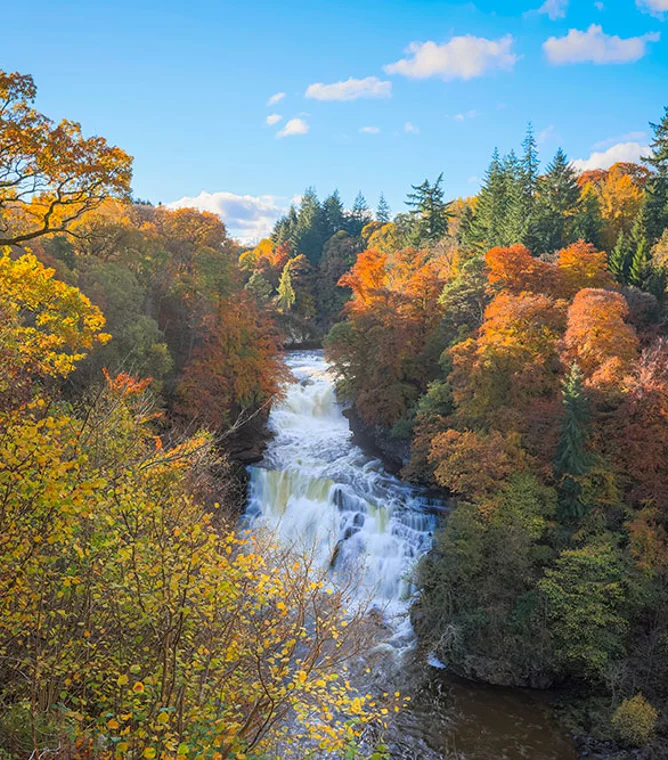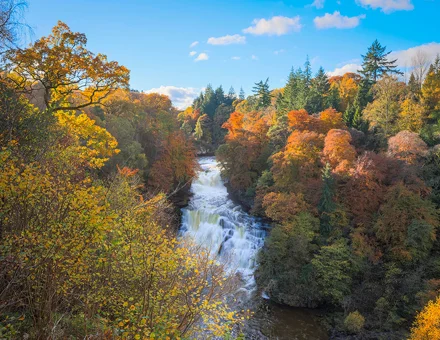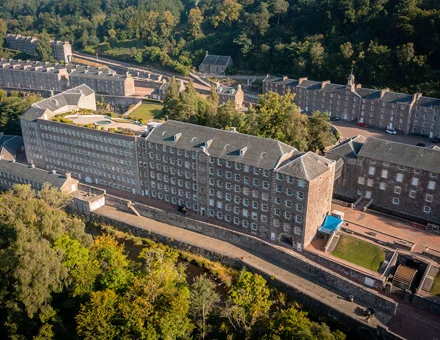
Carstairs
Carstairs dates back to Roman times and is named from Castra Terras or “Fort Land” because of the presence of the Roman Fort a mile southeast of the village. The town was made a Royal Burgh by King David I in 1128. Carstairs Junction replaced the village of Stawfrank in 1840 when the Caledonian Railways built the railway line that serves the village today.
Landmarks and Attractions

Clyde valley/falls of clyde
A series of magnificent waterfalls located near the village of New Lanark. The area is a designated nature reserve, home to diverse wildlife, including rare bird species such as peregrine falcons and kingfishers, making it a popular destination for nature lovers and outdoor enthusiasts alike.

New Lanark Mill
A UNESCO World heritage Site located in the village of New Lanark. Founded in the 18th century by social reformer Robert Owen, the mill complex played a significant role in the history of industrialisation and social welfare. Today, it stands as a beautifully preserved example of a cotton spinning mill and workers’ village, offering visitors a chance to step back in time.
